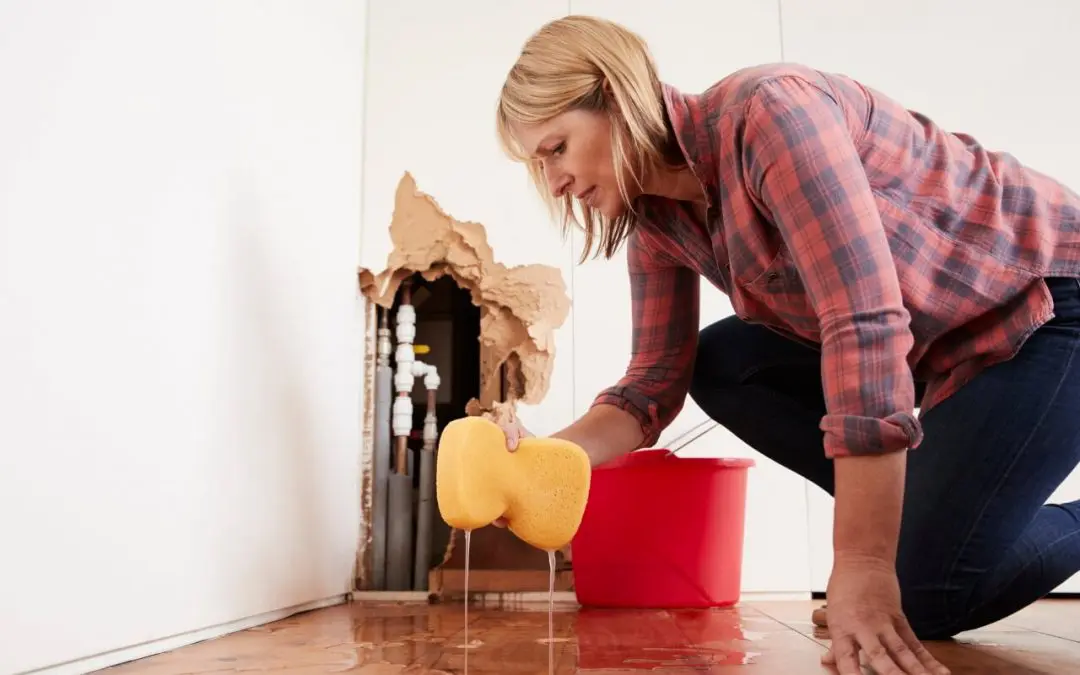Water is essential for cooking, bathing, and cleaning. However, water can also be a destructive force inside the home due to faulty pipes, flooding, or a leaking roof. When one of those events occurs and you have water in your living spaces, you should take action right away. These four steps will help you minimize residential water damage.
Stop the Advance of Residential Water Damage
The first thing you must do to limit water damage is to stop it from becoming worse. If the problem originated with a plumbing leak, turn off the water to the house.
You can reduce the amount of water that will escape via the leak by opening faucets in sinks and bathtubs to drain water from the system. If the leak involves hot water, turn off the water heater. If it runs dry, it could overheat as it attempts to warm an empty tank.
Water from outdoors is generally more problematic. If you have a leak in your roof, cover it with plastic or tarps right away. This can be difficult or dangerous depending on the weather and the type of roof, but the sooner this step is completed, the less residential water damage you’ll suffer.
If the water damage is caused by heavy rains or flooding, you’ll have to wait for the water to subside before taking steps toward remediation.
Check Electricity Before Dealing with Residential Water Damage
An electrical current turns a minor water situation into a potentially deadly scenario. Any water leak has the potential to come in contact with wiring, electrifying the water, and making it dangerous to mitigate the situation.
As soon as you notice any type of leak or flooding, disconnect the power. If the water makes it impossible to get to the breaker box, do not attempt this. Instead, call your electrical provider.
Once you start checking for areas of water damage, pay particular attention to electrical components in the area. Leaks that spray or drip could saturate things like outlets, appliances, and your breaker box.
Salvage Valuable Items
The structure of the home is just one concern after residential water damage. The contents of the house are also affected, which is sometimes more costly than structural damage.
Start moving fragile and expensive items out of the area as soon as it’s safe to do so. Electronics, furniture, and heirlooms like photos and books should be taken to a dry location.
A situation like this is a good reason to compile an inventory of your home. If a serious leak or flood occurs, you’ll have a record of your belongings, and for those items that cannot be salvaged, you’ll have a list to present to your homeowners insurance company.
Deal with Moisture Immediately
The immediate impact of water is noticeable. The saturated carpets, collapsing sheetrock, and ruined electronics are the first things we see. These items are typically disposed of on the first day or so after water damage occurs.
The long-term damage is less obvious. After the puddles are gone and the debris is removed, the home still has to be dried out. The high humidity in the house will foster the rapid growth of mold, which can damage materials in the home untouched by the initial water event.
Begin operating fans and dehumidifiers around the clock as soon as you can turn the electricity back on. This will help eliminate moisture in the air and limit the spread of mold and mildew.
When water intrudes from outdoors or because of a plumbing leak, take these steps right away to minimize residential water damage.
Jones & Cooper Home Inspections offers home inspection services for home buyers or sellers. Contact us to request an appointment in Metro Louisville.

